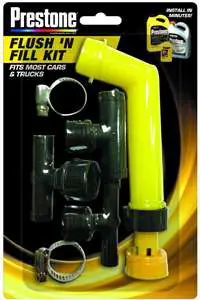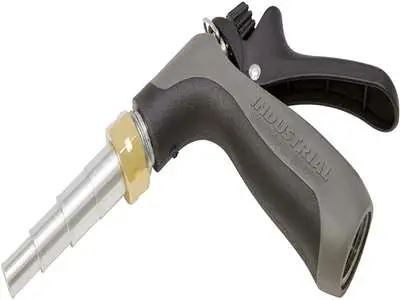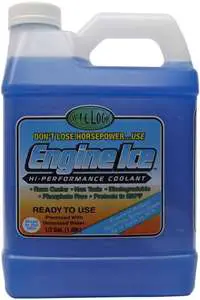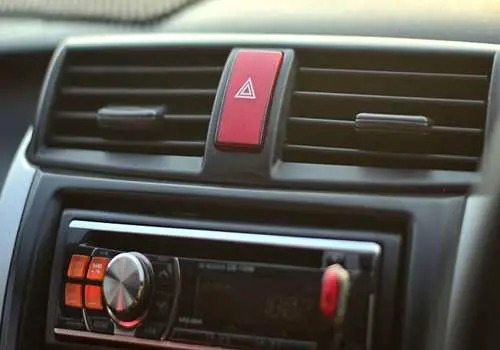
It is a cold winter morning. You grab a hot cup of coffee to go and leave for work. Just as you hop in the car and turn on the heater, it starts blowing cold air right in your face.
You give it some time, but it still doesn’t get any warmer. Are you as uncomfortable as I am right now? If you have had this problem, I have just the right tips and techniques to deal with it.
The following data will help you understand your car’s heater core better, the cause of the problem, and how you can fix it.
You are in luck because many new models (of cars) have more or less the same heater design. The systems of these heaters work in a similar way too so the following information would help you regardless of your car’s model or type.
Why is the Heater not Blowing Hot Air in the Car?
The reasons why your car heater not blowing hot air are your coolant or antifreeze may not be getting up to temperature, low coolant level, a faulty thermostat, the heater core is actually blocked, heater control valve, bad air blower.
There are various reasons why is your heater not blowing hot air despite being turned on. It would be best if you kept in mind some things before getting to the issue as it will help you nip the problem in the bud.
Check climate controls, check the speed of the fan. Nevertheless, when the blower fan isn’t working effectively, you may feel practically no wind coming from the vents or irregular blowing.
Now, Consider it this way
Another consideration you need to make is that all of the car’s vents must be open, and the vehicle must be running at the operating temperature. If it isn’t so, take it for a ride; around 15-20minuites.
As for why your car’s heater is blowing cold air, and how can you beat that? Here are some problems and causes behind them to help you figure out the real issue:
1. Low Coolant Level
The most common problem, a car heater blowing cold air and overheating / a car heater blowing cold air is the low coolant level.
In case, there can be a low coolant level which can happen because of some leakage or a severe issue, i.e. you might be burning the coolant which could be more worst.
In case of a leakage, the coolant level would not be the same, and there will be an improper flow of the coolant even if your restore the fluid there for you will need to fix the hole causing the leakage first.
Solution: To fix it, use a sealant to seal the hole, and restore the fluid. It will bring back the smooth circulating fluid system and good-as-new heating system.
2. Thermostat not Working Properly
A broken/faulty thermostat can also be a problem at times when you experience bombed up the heating system.
Here is a little tip
The thermostat opens and closes when the engine reaches 90 degrees so if your thermostat doesn’t work even after the engine has been running for over ten minutes, it indicates a fault.
Therefore, if it broke/faulty, the warm coolant wouldn’t reach the heater core; hence, the heater’s air would be cold.
Solution: the only way to solve a thermostat problem is a replacement. Think I am exaggerating? Getting a new one would be a cheaper and faster solution to your problem.
3. Clogged Heater Core
Cleaning is crucial for things like heaters and filters as the accumulation of materials can lead to problems in their system.
If you have not flushed the heater for quite a while, there is a chance that the debris from corrosion can hoard up in there causing a blockage.
Solution: you already know what I’m going to say, cleaning; yes! Make sure to flush the heater core now to fix a clogged heater core.
4. Bad Heater Control Valve
A valve controls the coolant’s amount leaving the engine and entering the heater core.
The valves must work properly; otherwise, the heater will start blowing cold air as the amount of coolant received by it would be insufficient.
Solution: replace the bad valves to ensure smooth circulation of the coolant fluid throughout the system.
5. Car Heater Blower not Working
Besides these, there is one more reason why your car heater is not blowing air. A bombed blower motor or fan’s switch (resistor) is out of order. These components control the speed of the fan.
Your car is not blowing hot or cold air because there is something wrong with the fan itself or the mechanisms that control its function.
There might be a chance that the electrically controlled bend doors that control the airflow are broken or have some fault.
Solution: in a situation like this, do no DIY; it’ll only increase the chances of further damage. Consult an auto-electrician or a professional to deal with this problem.
6. Improper Coolant and Antifreeze Ratio
Have you wondered how the coolant fluid causes heating and cooling? Here’s how the liquid is a combination of coolant and antifreeze.
The ratio of each is based on the climate your cars kept in. For example, if you live in a cold region where the temperature drops to -20 degrees, the mixture will have a higher proportion of antifreeze.
Similarly, if you belong to a warmer region, you might need very little antifreeze to no antifreeze at all.
Therefore, your car needs to have a proper ratio of the two in the coolant fluid mixture to provide adequate cooling or heating.
I know what are you thinking now, so lets get into it
How to Flush a Heater Core Redneck Style?
Flushing the heater core might sound like a tricky process, but there is no rocket science. I have a simple method through which you can flush it using a garden hose. Sounds interesting, right? Let’s get started.
Here is all that you are going to need for this:
- A flush kit. Prestone AF-KIT Flush ‘N Fill Kit is a good option since it has an adapter and is easy to install. See Price
- Gardening hose See Price
- Two buckets and
- Pliers
- Instant-read thermometer (optional but highly recommended) See Price
Procedure
To monitor the temperature and smoothly run the core flushing operation, you’ll need an instant-read thermometer.
Turn on the heater up to max heat, switch to vent, and turn the blower to the maximum speed. Now place the thermometer in the vents.
Now it’s time to rinse the hoses. Pop the hood and locate the hoses. They are present on the passenger side or the middle of the firewall; the hoses will be going through that firewall.
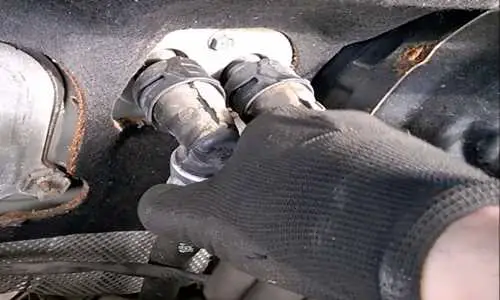
To differentiate the inlet hose from the outlet one, locate the heater core valve. The one with a valve attached to it is the inlet, so the other one is automatically the outlet hose
What the point of doing so? Let me explain a little, here you’ll be flushing the core which means you need to reverse the flow causing all the deposition to come out of the other way.
Get yourself a flush kit which you can find at quite reasonable prices. Since we are using the gardening hose method, you’ll be needing from that kit would the adapter to go in the hose’s mouth.
Now, hang on for a Safety tip: start flushing when the engine has cooled down. Make sure to take the initial reading from the instant thermometer to ensure the flushing worked. The temperature at the end must be higher than the initial one.
Now that you have your flushing equipment ready start to unclamp the hoses using a pair of pliers. Once you detach the hoses from the firewall, attach the clear hose to the gardening hose (form the flush kit) and stick it in the outlet hose of the car’s heater core.
Next, take the exhaust hose and attach it to the inlet hose; the other end of this hose will go into a bucket. Remember you are reversing the system to extract out all the accumulations.
Before you turn on the tap and let the water in, make sure the pressure isn’t too high as most of the heater cores are used to high temperatures only. Ideally, it’s around 10psi, so make sure to stay close to that.
How to know when it’s done? The outlet hose lets clean water and dirty water (along with the antifreeze coolant) will come out of the inlet hose. When the water in the inlet hose becomes clear, turn the tap off.
Now you have to replace the old coolant with the new one. Disconnect the adapter, so the outlet hose is open to you. Fill that with fresh antifreeze fluid (that is compatible with your car’s settings.)
When you see the green fluid coming out of the inlet hose, the flushing is complete. Disconnect the flush kit hoses and clamp back together with the core ones to the firewall. That’s it.
Is there a Fuse for the Heater in my Car?
A heater does not have a fuse, to begin with as it is not an electrical device. A car’s heater is a radiator system that circulates the coolant throughout the course.
When the blower fans blow air over the heater core, its temperature rises. This heat, generated by the engine, is then taken to the rest of the vehicle through the coolant fluid.
Let’s come to the fuse. The heat generated by the engine is spread across the vehicle by a blower fan. A fuse is attached to that blower fan.
That fuse might only be for that fan; however, more devices are attached to it in some cars. It differs from car to car.
To understand the fuse’s mechanism and structure, you can consult the owner’s manual that comes with the car. It has detailed diagrams and relevant explanations to help you figure out the issue.
Why Car Heater blows Cold air when Idle and Warm air when Moving?
The operating temperature for your car’s engine is 90 degrees Celsius or 195 degrees Fahrenheit. At this temperature, the heat from the engine raises the temperature of the coolant.
The heated coolant then warms up the vehicle. The car reaches the operating temperature when your drive for about 20 or more minutes. Once the engine warms up, it heats the coolant fluid, and as a result, the blower fan starts blowing hot air. Hence, the warm air only comes out of the vents when the car has been running for a while.
Products You May Need
Heater Core Backflush Tool
As efficient as the gardening hose method can be, you can also use the backflush tool to flush out your car’s heater core. See Price
High Performance Coolant
You need coolant after a flush so Engine Ice is one of the best USA brands, recommended for high performance. See Price
Related Articles: What are the Symptoms of a Bad Heater Core

